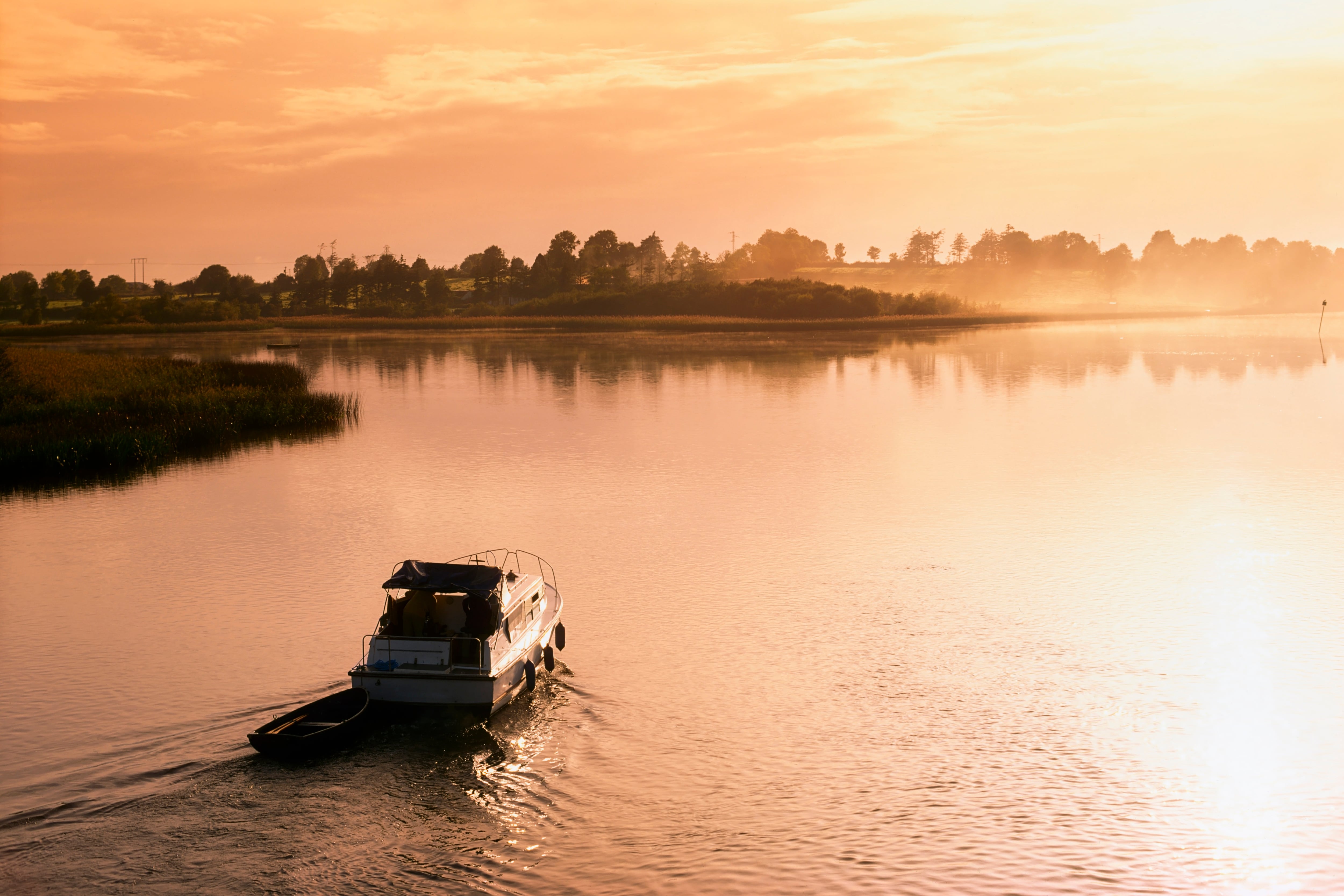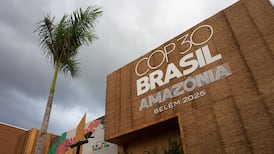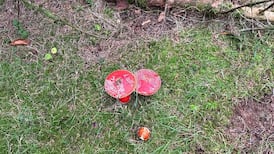Just a faint whiff of sheep or deer in the air is enough to transform my hairy lurcher Mossie from the gentle, relaxed soul of a dog I know into an unrelenting hunter, deaf to my calls and capable of traversing any terrain in pursuit of a scent. And so, as we walk along some of Wicklow’s picturesque backroads, she’s umbilically tied to me by a lead.
I’ve come this way, hoping to gather a few sessile oak acorns to germinate at home. But at this time of the year, it’s mainly mushrooms on my mind. My fungi identification skills are dismal. Every autumn I try to remember a few new species, but such is the ephemeral nature of mushrooms that I inevitably forget these nuggets of information. And so, each year, I start anew, wondering what on Earth I’m looking at.
We slip off a minor road and drop into the shade of a small oak woodland and then down into a wide, open valley cut in half by a bulging river that flows silently into the lake. We follow the river towards the shore, and there, nestled alone in a patch of sand beside a silver birch tree, I spot the most iconic and whimsical mushroom of them all: a bulbous red fly agaric. For a fungi amateur like me, it’s thankfully easy to remember, with a striking silhouette resembling a classic toadstool from a children’s story. Imagine a hemispherical cap, reddish-orange in colour, dotted with creamy wart-like spots and sitting on a thick white stem just a few inches from the ground.
Fairytale-like in appearance, fly agarics embody the idea of mushrooms as conduits to different worlds, breaking down dead matter and turning it into new life, whose mind-altering, psychoactive effects can unlock altered states of consciousness and as signifiers of a place where elves, pixies and spirits gather.
READ MORE
This mushroom stands on its own, its red colour glowing against Wicklow’s muted, soft colours. It’s hard to know if it embodies beauty, danger, or both. Later, I read that it’s toxic and is closely related to the extremely dangerous death cap mushroom and the poisonous and psychoactive chocolate brown panther cap.
Fairytale-like in appearance, fly agarics embody the idea of mushrooms as conduits to different worlds
Up close, it gives off an earthy aroma, the kind you’d get in a damp woodland with fallen leaves gathering in the soil. The handsome fruiting body is compact and sturdy; below ground, it is connected to other trees and plants by a network of thin fungal strands known as mycelium.
Merlin Sheldrake, author of Entangled Life, a stunning book on the complexity of fungal life, writes that “if you teased apart the mycelium found in a teaspoon of soil and laid it end to end, it could stretch between 100m to 10km. Soil would be sluiced off by rain were it not for the dense mesh of fungal tissue that holds it together”. These strands branch out like vast underground spider webs, exploring the soil to unlock the nutrients from dead and decaying vegetation. They either wrap around or penetrate the roots of nearby trees and deliver moisture and essential minerals in return for sugar.
[ The mushroom revolution – Fionnuala Ward on edible fungiOpens in new window ]
Further up the shore, I spot a single, fat white orb in the sandy ground. It’s a solid, sturdy puffball mushroom, pregnant with more than a trillion spores. It’s hard to resist the urge to kick it and make it ‘puff’; over time, its smooth white surface will dry out and turn brown, and a small crater will appear at the top. A small amount of pressure (raindrops from a light shower are sufficient) is enough to expel the spores through the hole; it looks like a steam engine puffing away, and a single puff pushes out a million spores. But this one isn’t ready yet – it sits on the ground like a dome of fresh mozzarella cheese.
We walk through the woods, across the land, and on the roads, but I spot few other mushrooms. I’m surprised – perhaps it’s a poor year for them? – but hope too that recent whispers of commercial-scale foraging, which strip areas of edible fungi, are incorrect. A few years ago, the City of London Corporation began to clamp down after the demand for wild mushrooms in high-end restaurants and markets wiped out ancient forests of fungi (one person was caught with a massive 50kg haul in Epping Forest).
In Ireland’s legally protected sites, anyone foraging should first, according to the National Parks and Wildlife Service, contact their local ranger. Given the money that can be made from wild mushrooms – wild morels can fetch up to €100 a kilogram – the incentives are there.
We head towards the car. What started as a ditchwater-dull day has brightened, and Mossie’s dappled light and dark grey coat complements the 400 million-year-old outcrops of Wicklow granite that sparkle in the landscape. Fed up walking on the lead, I take her home and let her off in a local park with not a sheep or deer in sight.
This article was amended on October 14th.












